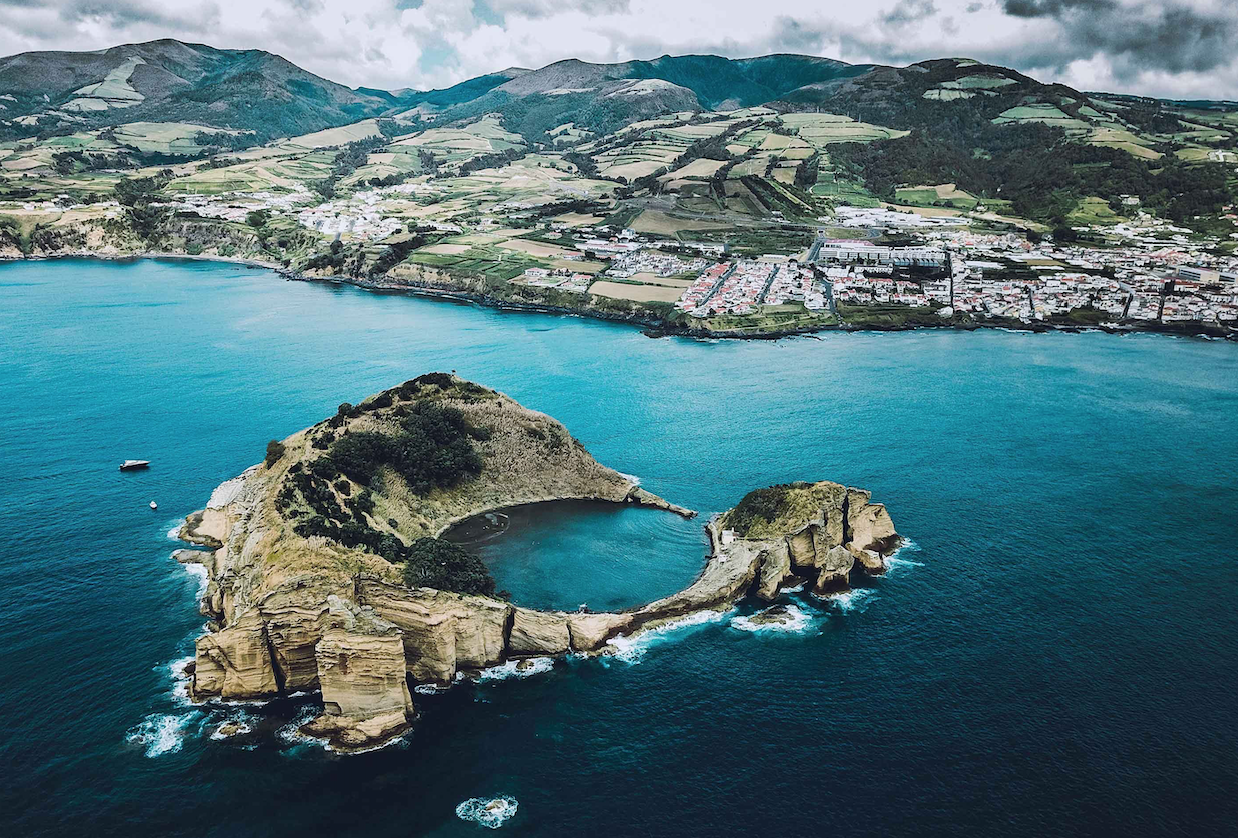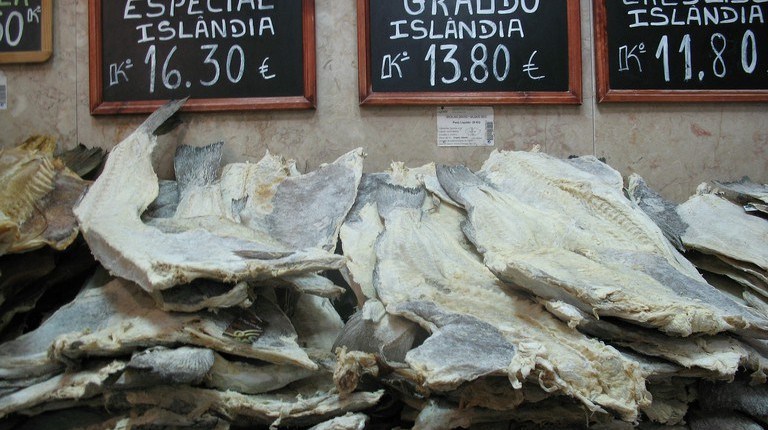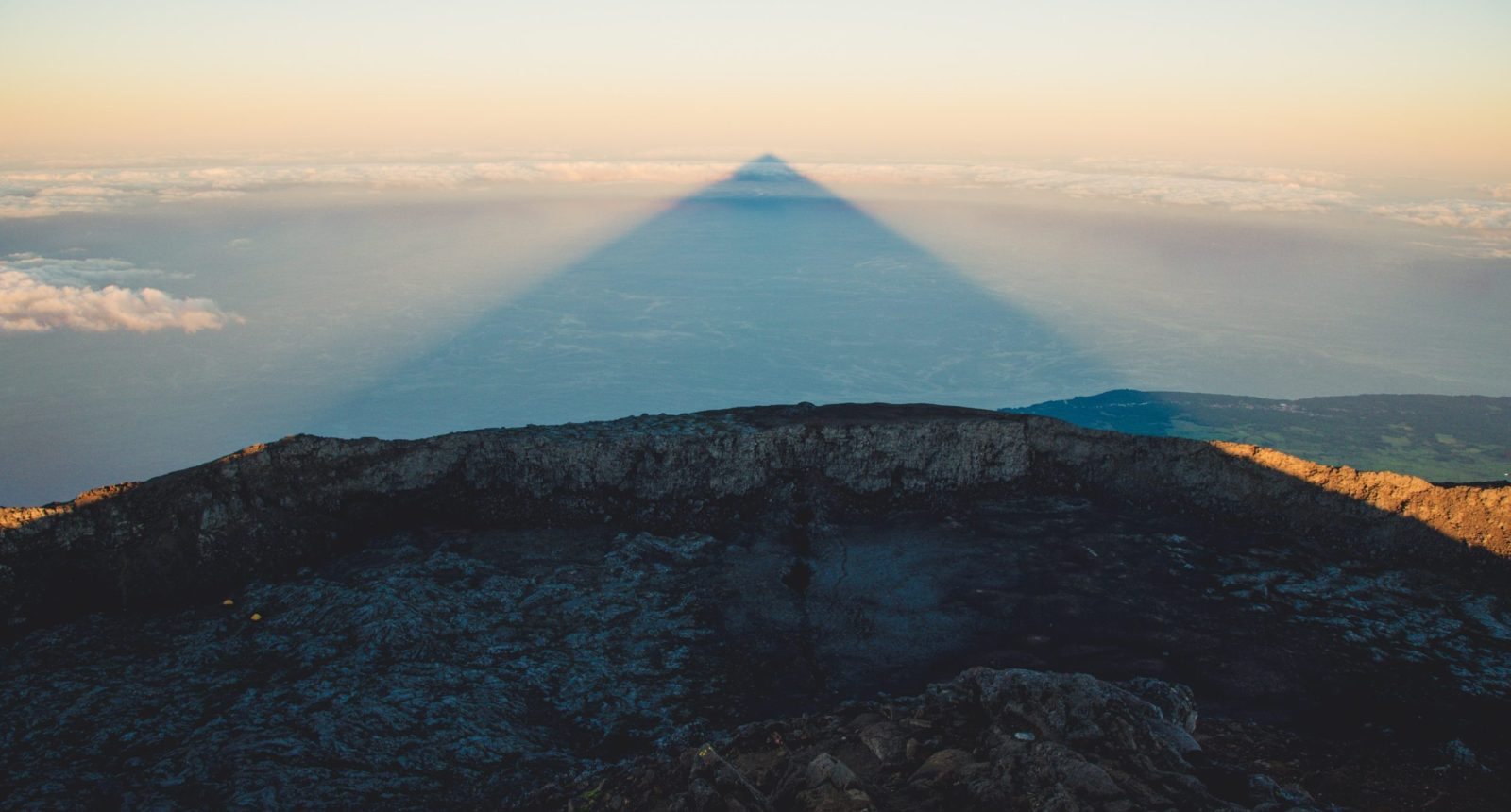
The Açores is a small archipelago of nine islands nearly 1,000 miles off the coast of Portugal. It’s home to Europe’s most fascinating natural landscapes and it also happens to be where my family is from!
Climb Mount Pico
Mount Pico is located on the island of Pico, the second‑largest of the nine Azores islands. Standing at 2351 meters tall, this dormant volcano is the ultimate Azorean challenge – if you’re visiting Pico, you cannot pass up the opportunity to climb it!
At more than twice the altitude of any other peak in the Azores, it’s not just the highest point on the island, but also in all of Portugal and the Mid‑Atlantic Ridge.
Swim in the Piscina Natural on São Jorge Island
On the southern coast of São Jorge island lies a small village called Velas Village that is home to several natural swimming pools, formed by the remnants of volcanic activity in the ocean. These are referred to as “Piscina Natural”.
A massive cliff borders one side of the Piscina Natural while the other opens up to the big, blue ocean, held off only by a few remnants of volcanic rock poking out above the surface. I’m not going to lie, this place definitely had some Jurassic Park vibes.
Visit a vineyard
The Azores islands have produced wine for centuries. The archipelago is a particularly unique wine region because the vines grow and produce grapes on a surface of volcanic rocks.
White wines are made primarily from Arinto grapes, with lesser quantities of Verdelho and Terrantez do Pico grapes, whereas red wines are produced from Merlot, Syrah and hybrids. The white wine Frei Gigante is a go‑to staple, and my personal favourite.
There is a continued interest in growing the wine industry on the islands. In the past three years, the number of vines under cultivation in the Açores has doubled to over 1,200 acres (most of which is grown on Pico).
It’s no wonder some refer to the Island of Pico, as the “Island of Wine”.
Learn about Capelinhos
The Capelinhos is a volcano located on the western coast of Faial Island. On September 27, 1957 Capelinhos erupted. The eruption lasted for 13 months.
More than 30 million tons of ash and lava was ejected from the volcano, resulting in more than 2 km of newly formed land (which is what you see in this photo) and the biggest emigration wave the island ever experienced, as more than 2,000 inhabitants had lost their homes and land.
Go scuba diving
The Azores is a hotspot both geologically and biologically. Often described as an oasis in a vast, blue desert, it’s home to more than 20 species of whales and dolphins. The subtropical waters support gamefish, sea birds, turtles, sharks, rays and a host of reef dwellers.
About a two‑hour boat ride off of Pico Island lies Princess Alice Bank, a submerged seamount in the Atlantic Ocean which rises from a depth of approximately 2,500 meters. It was discovered during an expedition of Prince Albert of Monaco on July 9 in 1896 and today, it’s considered to be one of the best diving sites in the entire world.
Try lapas
Lapas, or limpets in English, are an Azorean delicacy.
Lapas are typically pulled off the volcanic rock along the shoreline and can be eaten raw or grilled. Grilled lapas, called lapas grelhadas in Portuguese, are usually served in a sauce of butter, garlic, and a drizzle of lemon.
Sunbathe at the barca
In the Açores, the beaches are called “barca”. The beaches on the islands are unique because they don’t have any sand, since they were formed by volcanoes.
In the summer months you’ll find locals and tourists lounging on the volcanic rock in between dips into the crystal clear Atlantic Ocean.
Eat dinner cooked in a volcano
São Miguel is the largest island in the Açores archipelago. One of the island’s main attractions is the town of Furnas, comprised of a lake, a valley, and a village, just off the south‑eastern coast.
Here you can enjoy “Cozido das Furnas”.
“Cozido” is a traditional Portuguese dish composed of various meats and vegetables like cabbage, potatoes, and carrots. In Furnas, the cozido is special because it’s cooked by the steam from the hot springs. The meal is placed in a large pot, then placed into the ground, where it slowly cooks for about five hours.
Enjoy the view from the inter‑island ferry
It’s very easy to travel between the nine Açores Islands thanks to the inter‑island ferry. Depending which islands you’re travelling between, the ferry journey can take 20 minutes or 2 hours.
One thing is always guaranteed though: the views are stunning.
Drink a Sagres 🍻
Sagres is one of the most popular beers in Portugal and definitely worth a try during a visit to the Açores. You can find them in nearly every grocery store, bakery, or corner store.
I recommend grabbing a couple and finding an elevated spot to crack it so you can enjoy the views of the Atlantic Ocean and old school Azorean architecture while you sip.



